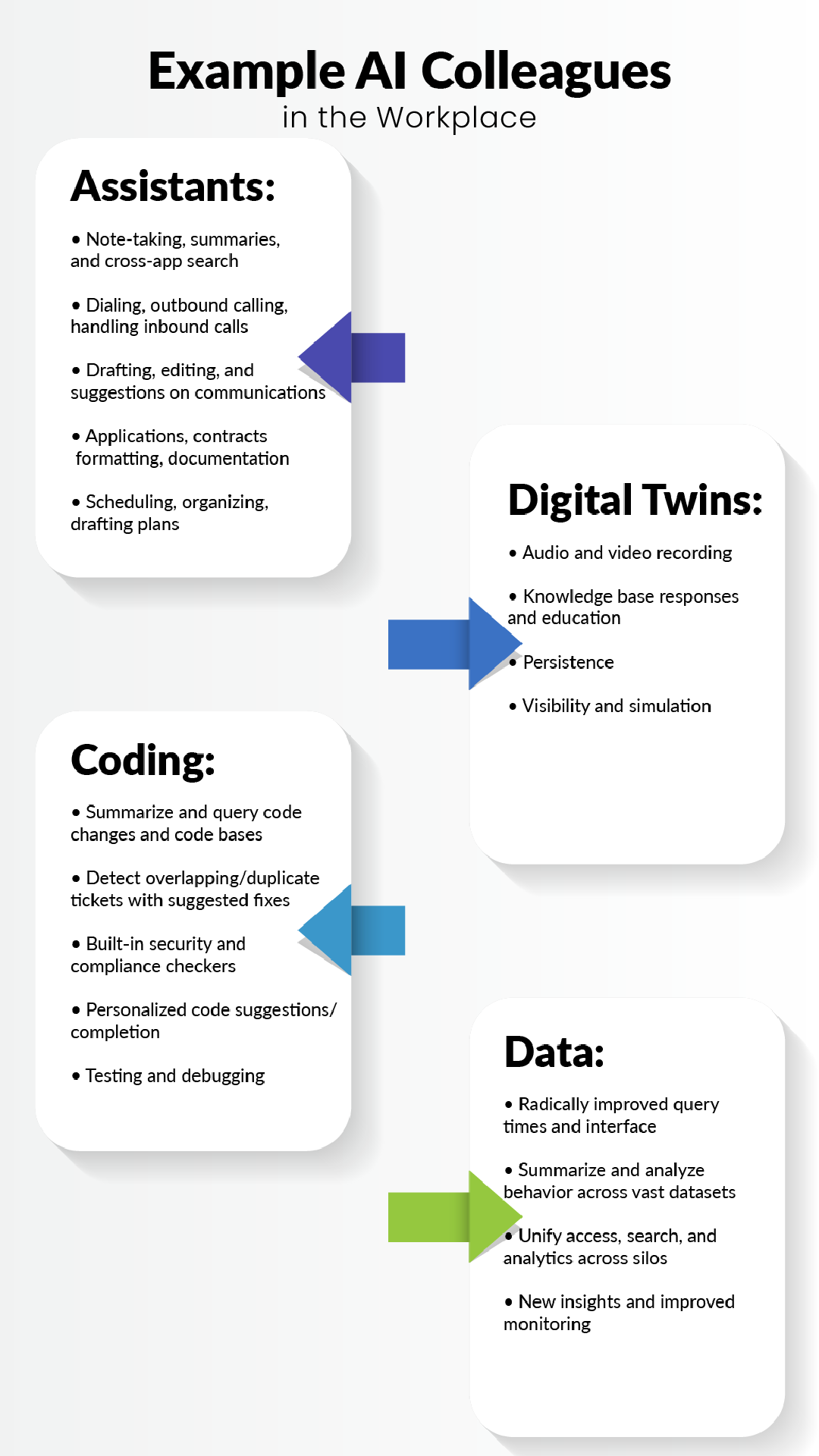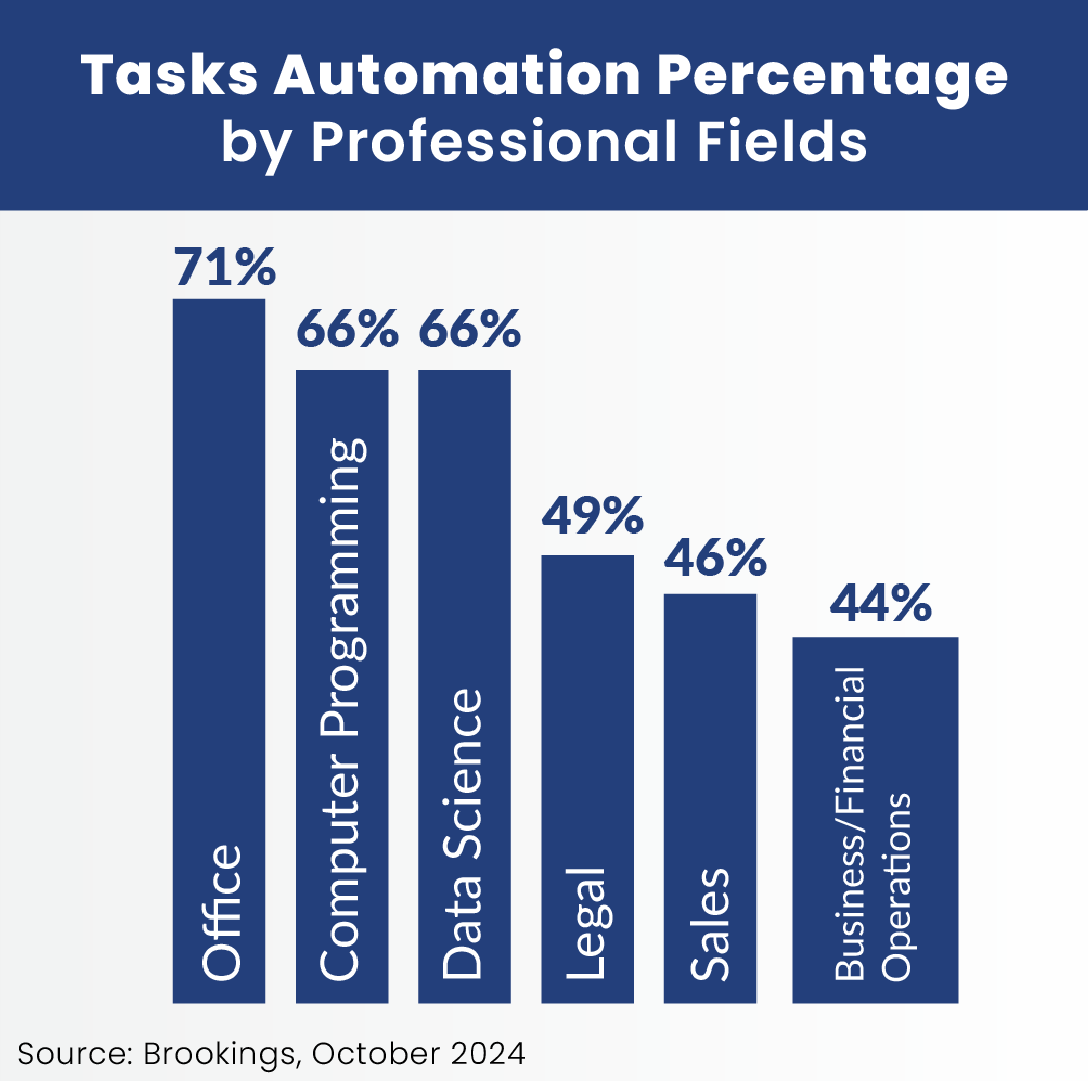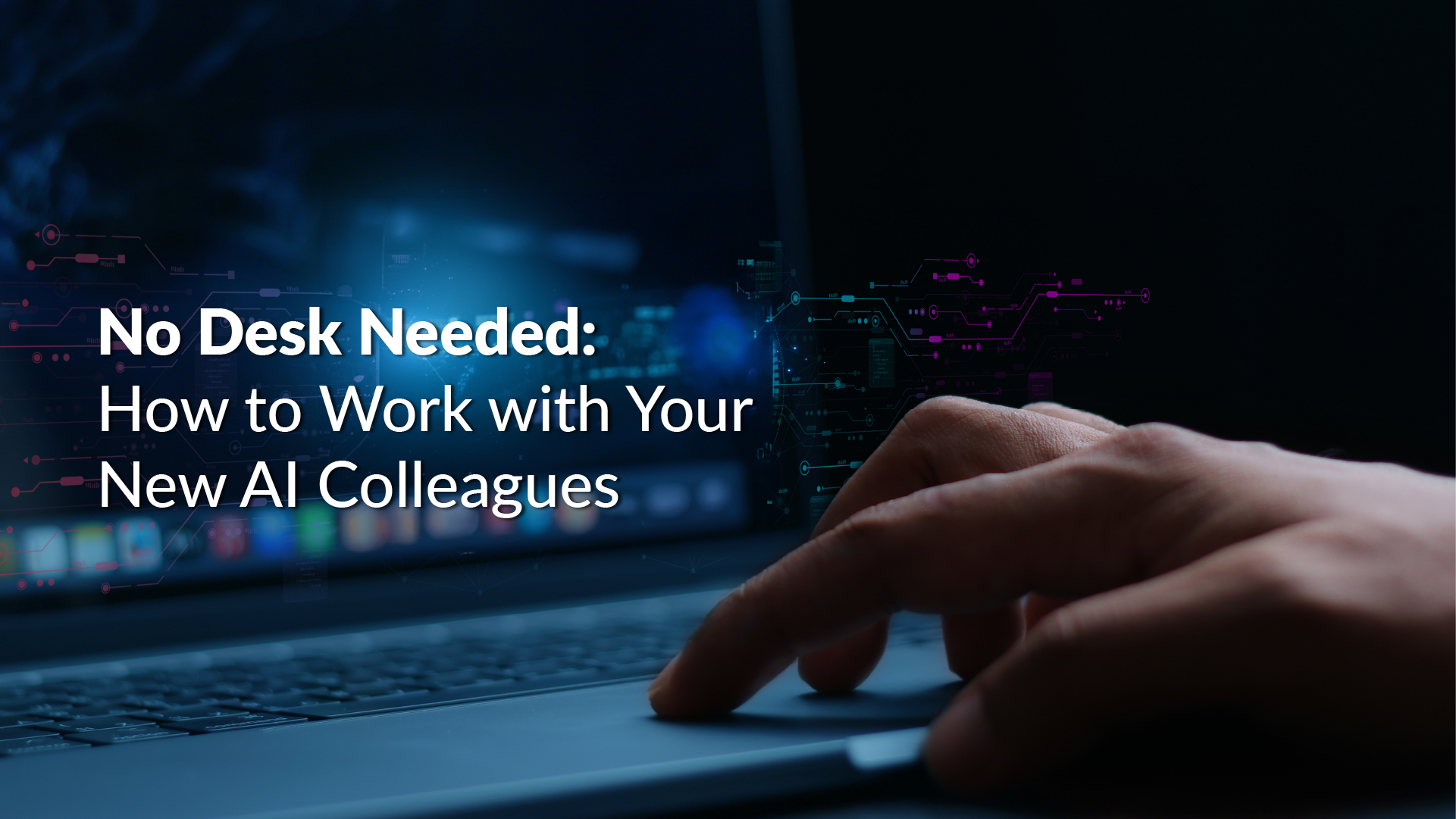You no longer need to answer, or make, most phone calls at work. If it’s exploratory, about knowledge, looking to schedule, arrange, respond, or promote?
AI systems can do that. They’re doing it already.
Documentation, note-taking, extensive searching, or filling out forms. Anything you do multiple times a day, the same or a set way, is either already being automated or is up next.
Your AI coworker is here. And it’s here to stay.
In a new survey, Sia Partners analyzed 50 occupations in fields including hospitality, healthcare, engineering, manufacturing, legal, education, and finance and found that 80% of jobs will experience moderate or greater impact from even the current AI technology. Gartner, in October 2024, believes 80% of the engineering workforce will need to upskill by 2027.
The sectors most transformed are office jobs (bookkeeping, accounting, customer service, assistants), with coders and data scientists not far behind.
We’ve written before that we don’t believe AI in the workplace means wholesale replacement as some initial projections indicated. But it does mean change. And that change is coming fast.
In today’s report, we look at what AI is doing right now, with AI agents on the horizon. We consider the benefits to businesses, risks to workers, and how to best adjust to a workplace full of AI colleagues.
They may be capable of whipping up multi-page reports, placing hundreds of phone calls, and creating surprisingly good artwork in seconds, but they still can’t tell good jokes.
AI Automation and Collaboration
Here are some things that AI is doing at workplaces right now:

We’ve all gotten used to AI whipping up text on demand, but today’s AI automation in business can also take notes, summarize across apps and vast repositories of data, and edit and refine outlines and plans. It can search existing contracts, generate relevant forms with appropriate data, schedule, streamline, organize and more. (Examples: Dun & Bradstreet’s SmartMail AI and SmartSearch AI, Vodafone, Motorola.)
Current systems are perfecting AI for call handling automation, in call centers and offices around the world. They are capable of extracting the necessary information to book travel, schedule appointments, accept or reject requests, and provide all manner of information on request. With a conversational flow built off provided scripts and bolstered by the capacity for personalization and improvisation, these systems are a striking step forward not only in customer service but also in sales, promotion, and technical support. (Examples: Alaska Airlines, Telecom Italia, ADT, Pete & Gabi, Best Buy.)
Digital twins of people, or virtual avatars reinforced with data that’s continually updated, take such interactions to the next level, allowing dynamic conversations using the specific likeness, voice, and even knowledge of a real person. The merger of AI and digital twins in business, healthcare, and education allows professors, subject matter experts, and skilled salespeople to interact one-on-one with everyone. (Example: check out Northwestern Kellogg School McCormick Foundation Professor Mohanbir Sawhney’s demonstration.)
In healthcare, AI goes beyond documentation automation, providing knowledge-base access and aiding shift changes, for example, by ensuring the exchange of vital information (HCA Healthcare), analyzing patient data for insights and error reduction (DaVita), identifying connections in research (BenchSci), and helping to direct physicians to relevant tests far faster (Dasa).
In software development, Github published a survey in August showing that 97% of engineers, developers, and programmers already use AI coding assistants. These assistants, copilots, debuggers, testers, and reviewers are among some of the most rapidly proliferating areas of digital transformation with AI, with tools launched to automate almost all parts of the process, with varying effectiveness. Examples provided by Google include Wayfair claiming a 48% boost to code performance in unit testing, and Leroy Merlin using AI to summarize coding changes and improve code reviews.
And while gains are being shown here (Github Copilot claims 55% faster coding), there are also less rosy stats, as from Uplevel, which suggest that use of Github Pilot has also created 41% more bugs.
[For more on this topic, check out our PTP Report Embracing AI Partnership in Software Engineering.]
Benefits and Realities
The AI benefits for businesses are obvious: greater efficiency, coverage, and consistency, with capabilities that exceed (in some areas) what’s been possible before. AI agents for customer service are coming online now, and OpenAI’s CEO Sam Altman has promised that “2025 is when agents will work.”
Capgemini’s Harnessing the value of generative AI: 2nd edition finds 82% of tech executives plan to integrate AI-based agents within the next three years and for obvious reasons: AI agents, being tailored for business functions, promise live data access, memory, collaboration with other agents, and much more autonomy to accomplish their mission than the GenAI systems currently in widest use.
Gartner predicts that by 2027, 50% of the GenAI models being employed in businesses will be specific to function (versus just 1% last year), and these task-driven agents will have the capacity to stack, or scale, by working together, to accomplish more complex things than they can individually.
A new study by Brookings analyzed OpenAI and Bureau of Labor Statistics data from 2023 to come to the following estimates on task automation by field:

They predict virtually all tasks (88%+) from some fields (such as bookkeeping, accounting, auditing clerks, insurance underwriters, policy processing, travel agents, legal secretaries, and administrative assistants) are likely to be automated by AI in the near term.
Any tasks that involve repetition (customer service, data entry, logistics) are likely to be automated within the next three years, rendering some positions obsolete while creating new ones.
And while workers need to reskill with AI and adjust to focusing less in these areas and more in those that require uniquely human capabilities, they also need to come to terms to working with this whole new set of coworkers entering the workplace now: AI systems.
Working With Reasoning Machines
AI and human collaboration is the near-term future at most workplaces, but there will certainly be tensions in these relationships—from fears over job security and fairness to privacy concerns to bias.
For companies, despite the clear boons, there are also concerns in a suddenly upscaled reliance on automation, like data security, loss of skills or understanding, and transparency on how the systems work.
While AI exceeds human capacity in certain areas, there will be unexpected gaps in others, such as reasoning, flexibility, and ‘common sense’ or intuition-driven capacities we take for granted now.
For successful AI and employee collaboration, building trust is essential. And currently, studies find this lacking, such as a Salesforce survey of global knowledge workers from April reporting that 54% don’t trust the data used to train systems, and ¾ of those in this camp believe AI lacks the information it needs to truly succeed.
Hallucination is another problem, and AI systems, such as more task-specific agents, will increasingly be trained with proprietary domain knowledge. But there are benchmark measures and then there’s perception and first-hand experience.
To build trust in this AI future of work, businesses require transparency first and foremost, and in a number of ways. Just as companies need clarity on data use and proof of security for trust and compliance, AI’s new coworkers will also need to know limits of how and where AI systems are being employed, what data they have access to, and what human oversights and controls are in place to protect the organization and its workers alike.
[For a detailed look at what companies should do to address this issue in AI implementation, check out our CEO’s newsletter: Fixing the AI Implementation Gap.]
Of course, starting small, with safe, sandboxed use cases is wise for organizations to limit potential exposure, and it’s also key for system coworkers, giving them time to adjust workflows and build this essential trust. The more gradual this transition, the easier it will be for teams to adjust to their newest team members.
Human workers are not in danger of wholesale replacement anytime soon, and a transparent and gradual roll-out helps develop the necessary collaboration for this relationship. These systems augment work, much as a great new teammate does, allowing them to do more together.
The clearer this is to everyone, first-hand, the stronger the end results will be.
Training is crucial to get return on this investment for the company, but it also educates AI’s coworkers to allow them to see the opportunities being provided, as with a new tool, as well as better understand both current limitations, and where a system may be headed in the future.
Conclusion
When you do the same task at work, be it dialing a phone, making a call from a script, formatting data, or drafting routine communications, it can be mind-numbing. Mistakes happen as the mind wanders. It’s the opposite of engagement.
And this is the very type of work that AI’s here to take on first.
Offloading such tasks in the right situation is liberating, but it can also be terrifying. Especially if you don’t know where it ends, how it’s happening, and what it means for your own future.
To be successful, this transformation must be about partnership. While businesses will thrive on the increased efficiency and consistency that AI automation brings, those freed from repetition must come to know these deskless, faceless new colleagues as allies, working together to a superior final product, and not their eventual replacement.
References
Gartner Says Generative AI will Require 80% of Engineering Workforce to Upskill Through 2027, Gartner
Most tasks in nearly a third of professions could be automated by AI, Irish Times
185 real-world gen AI use cases from the world’s leading organizations, Google
Devs gaining little (if anything) from AI coding assistants, CIO
3 Bold and Actionable Predictions for the Future of GenAI, Gartner
Getting To The Root Of AI’s Trust Problem, Forbes
New Survey: Data Will Make or Break Workers’ Trust in AI, Salesforce





